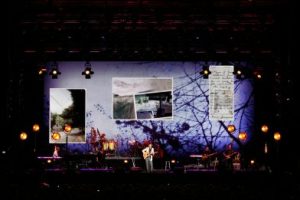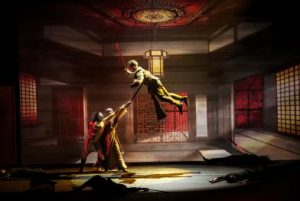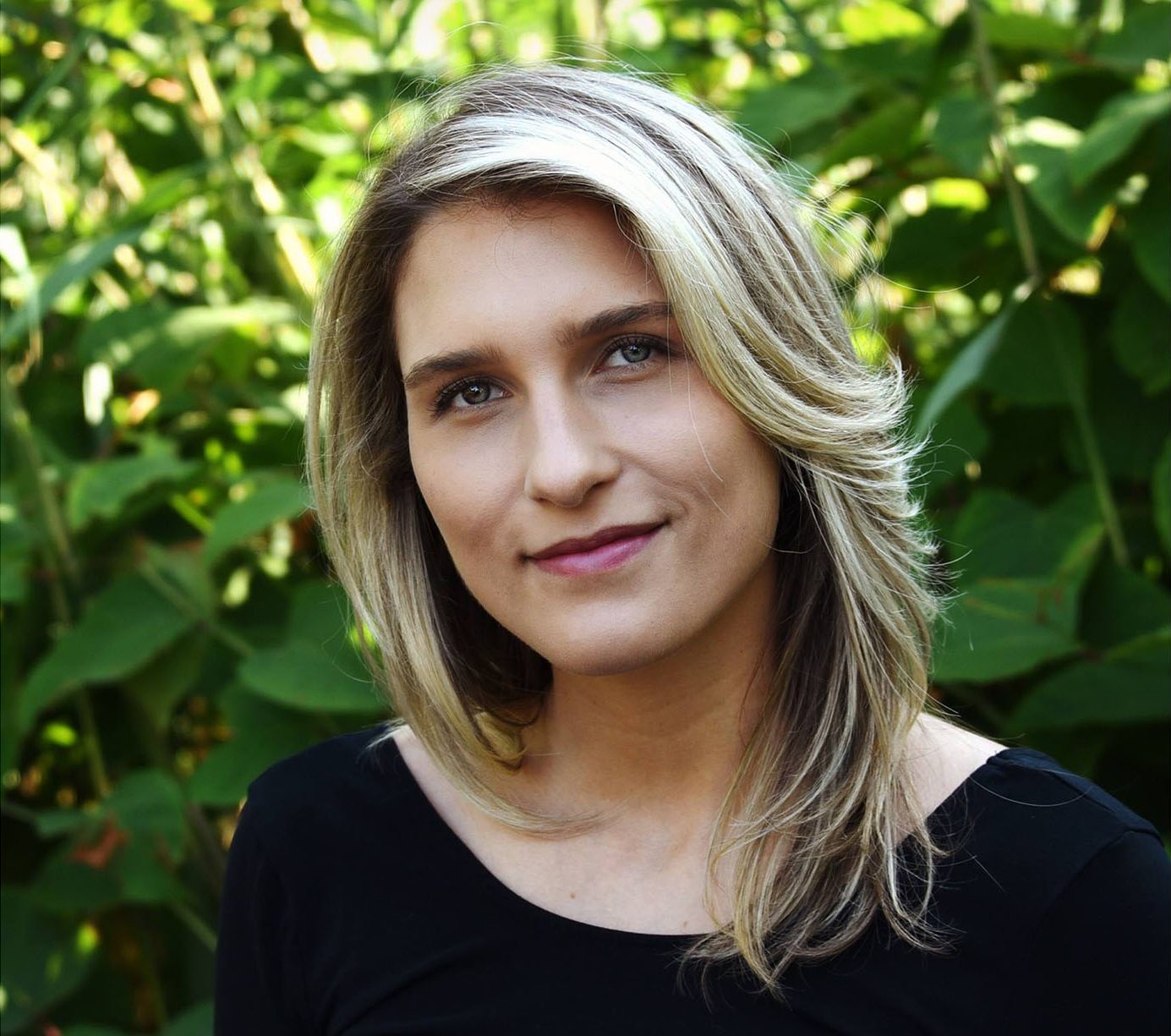Alumna Olivia Sebesky.
Northeastern University’s College of Arts, Media and Design (CAMD) alumna Olivia Sebesky, Art + Design, is a New York-based theater artist and motion graphics designer. Olivia designs video and projections for theater, dance performances, television, concerts and special events. She has designed projections for James Taylor, Nike, Jordan, Soho House, Alice and Olivia, Bloomberg, and The New Group. We sat down with her talk about her most recent projects and how Northeastern helped prepare her for her career.
Please describe a day in the life of a Projection Designer. What is your favorite aspect of your job?
Every day is completely different! No two jobs are the same.
If I’m in tech for a theater design job, a typical day looks something like this: By 9 a.m., I am sitting at my tech table at the theater while crew call is happening (lights being re-focused, scenic paint/build, projectors being refocused). My assistant and I will be editing content in preparation for tech. Usually around noon tech begins with all departments and cues are built, changed, edited, cut and rebuilt. At some point there’s a dinner break (which I usually work through) and then tech continues until around 11 p.m. After tech there is a production meeting with all departments. Typically, I am walking out of the theater at midnight. Then we start all over again the next day at 9 a.m.!
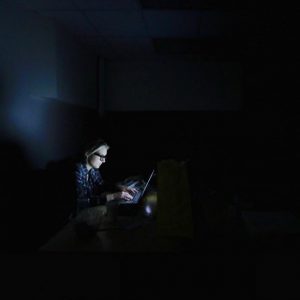
The best part of my job is the constant exposure to new facets of life, history, and human nature. The work gives me an opportunity to constantly learn.
Tell us about your role as Associate Projection Designer at the Motown Broadway National Tour.
I was Associate Projection Designer on Motown for several years, from about 2013 – 2016. I really fell in love with that show, although I might have been biased because I have always loved Motown music.
I wore many hats as Associate Projection Designer. My job was to manage the Projections department, which meant keeping track of the paperwork, cueing, production notes, programming, and having an overall eye on the work as it was put into the show. In my case, being the Associate also meant creating animations and graphics while managing the department! As Associate you basically have to know the show even better than the designer so that you are ready to be helpful at any moment and so that you can step in and speak on behalf of the department.
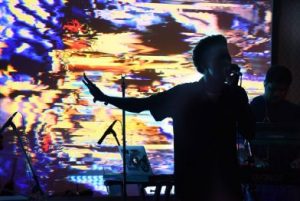
The role of Designer and Associate are pretty similar on a Broadway tour with regards to traveling around with the show. During tech, the show is programmed to be operated through the lighting board so once the tour hits the road, a technician takes over and Designer and Associate move on to the next project. With that said, if changes in design are requested by the Director or Producer, the Associate is often called on to hop to a particular stop on the tour and come in and make design changes. I think I went to about five different cities to put in changes to the show over a three-year period.
In your interview with LiveDesign, you mentioned your work on One Night with Janis Joplin.
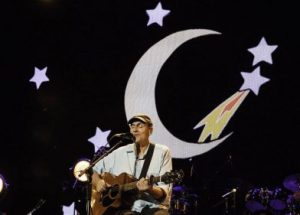
Describe your experience working on this show.
Working on this production with Justin Townsend, who was an Assistant Professor for CAMD at the time, was a game changer for me because I was able to be a part of the production process from start to finish. I built two scenic models for Justin, which helped me to understand how he makes decisions about space, scale, and materials.
Justin was also a great mentor because he let me rise to the occasion as an assistant, so as I showed him my skill and dedication to the project, he offered me more ways to be involved in a larger way. Then once we were in tech in Portland, Oregon, and the set had been built, my job as Assistant slowed down. I met the projection designer working on the production and recognized the program he was working in (After Effects). I had a basic skill level in After Effects so offered if I could be helpful; essentially, I became the assistant to both departments during that tech. I learned a ton and developed strong relationships that led to more work in the field.

How did your classes at Northeastern help allow you to explore your passions and prepare you for your career?
Northeastern absolutely prepared me for a career in the arts. There was always a very practical sense in the curriculum geared towards professional goals. I think my art history classes were what prepared me most for my career. With such a thorough background in art history, I had so much to reference as I created my own work.
I did not go on any traditional co-ops during my time at Northeastern. However, I created my own version of co-op by seeking out opportunities where I could work within my school schedule. I took a summer internship at Samson Gallery in Boston and eventually became Assistant Director. I continued to work at the gallery part-time until I graduated. I also started working as a projections assistant in theater my junior year and had several opportunities to go with the designer into tech for a week or two in NYC. My teachers, and the school in general, were so supportive of me during these times.
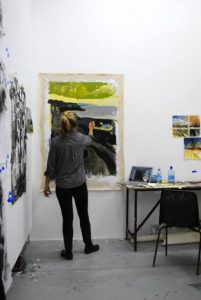
Last, you’ve been on the Art in Ireland Dialogue of Civilizations with CAMD faculty Mira Cantor. How was that experience?
Going to Ireland with Mira was a completely life changing experience for me. What Mira taught me as her mentee, and what I learned first-hand, is that an artist has to travel. It sparks new thought and inspiration in a way you just can’t simulate at home. It also pushes you outside your comfort zone, which has been paramount to my growth as an artist.
